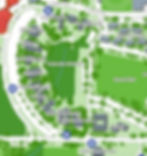Enhancing Campus Safety: The Role of Blue Lights
- The G Law Group
- Feb 7, 2024
- 3 min read

Colleges and universities across the country have taken steps to improve campus safety. One notable addition to this effort is the widespread installation of blue emergency lights on campus grounds. These lights help people find help when they are in danger or need assistance. They are easy to see and recognize. Blue lights on college campuses provide a fast way to contact campus security and law enforcement for help.
We use blue lights to illuminate paths, parking areas, and outdoor spaces. They also serve as a quick way to contact campus security. They significantly reduce potential hiding spots for illicit activities and provide pedestrians with a lighted path ensuring safer travel. Blue lights have also been shown to deter perpetrators from actually committing crimes of opportunity.
Blue light systems on campus connect to security infrastructure for quick response to distress calls. This swift reaction time is crucial in emergency situations, providing reassurance to the campus community and increasing overall safety. Some additional benefits are:
Illumination of Paths, Parking Areas, and Outdoor Spaces: Blue lights are strategically placed throughout the campus to effectively illuminate paths, parking spots, and general outdoor spaces. Bright colors make it easier to see and reduce dark spots, making the environment safer, especially at night.
Swift Contact with Security: Blue lights are not just safety beacons—they are a direct link to campus security. Pressing a button alerts security services right away, so they can quickly respond to any situation.
Deterrence of Illicit Activities: The presence of blue lights significantly minimizes potential hiding spots for illegal activities. Their visibility can deter potential wrongdoers from considering campuses as soft targets, increasing the overall safety and security profile of the institution.
Providing Safe Transit: Particularly beneficial during nighttime, the blue lights ensure safe passage for pedestrians. Whether students are returning late from study groups or staff is leaving after evening duties, the lighted path enhances their sense of security, making them feel safer on campus.
Integration with Security Infrastructure: Blue light systems are an integral part of the campus security setup. Their connection to the existing security infrastructure allows for a quicker and more effective response to distress calls.
Quick Response Time: The effectiveness of the blue light system lies in its swift response time. Emergency situations require quick action. Blue lights connect pedestrians with security services for immediate help when needed.
Reassuring the Campus Community: The blue lights remind everyone on campus that there are security measures in place for your protection. This can reassure staff and students that in any emergency situation help is only a few footsteps away.
Unfortunately, not everyone agrees about the need for blue lights on college campuses. For example, there was initially some resistance to installing blue lights on Fraternity Row at the University of Florida. Fraternity Row is a section of the University of Florida campus where most of the fraternity houses are located.
Blue Lights supporters argue that Fraternity Row needs better visibility and quicker access to emergency services. This is important because 33% of sexual assaults at the university happen on Fraternity Row. Studies also show that fraternity men are 3 times more likely to commit sexual violence than non-fraternity men.
Despite showing reluctance at first, after 200 students at the university protested against a decision to reject a bill for blue lights on Fraternity Row, the University of Florida now has 4 emergency blue lights. Since first installing the blue lights, the University of Florida has upgraded approximately 2500 exterior lights on campus to LED, thereby making the campus much brighter and safer at night.
Blue lights on university campuses in the US ensure safety for students, faculty, and staff. These beacons are important for making people feel safe. They are visible symbols of security and can quickly connect people to help in an emergency situation.
As campuses continue to evolve and adapt to modern safety challenges, the presence of blue lights stands as a testament to the ongoing commitment to creating a safe, secure, and supportive learning environment for everyone. We hope that you found this blog post helpful and informative. Should you have any questions about blue lights or campus safety in general, do not hesitate to contact the top-rated campus security lawyers at The G Law Group. You can give us a call at (305)486-7468 or send us an email at info@theglawgroup.com.

